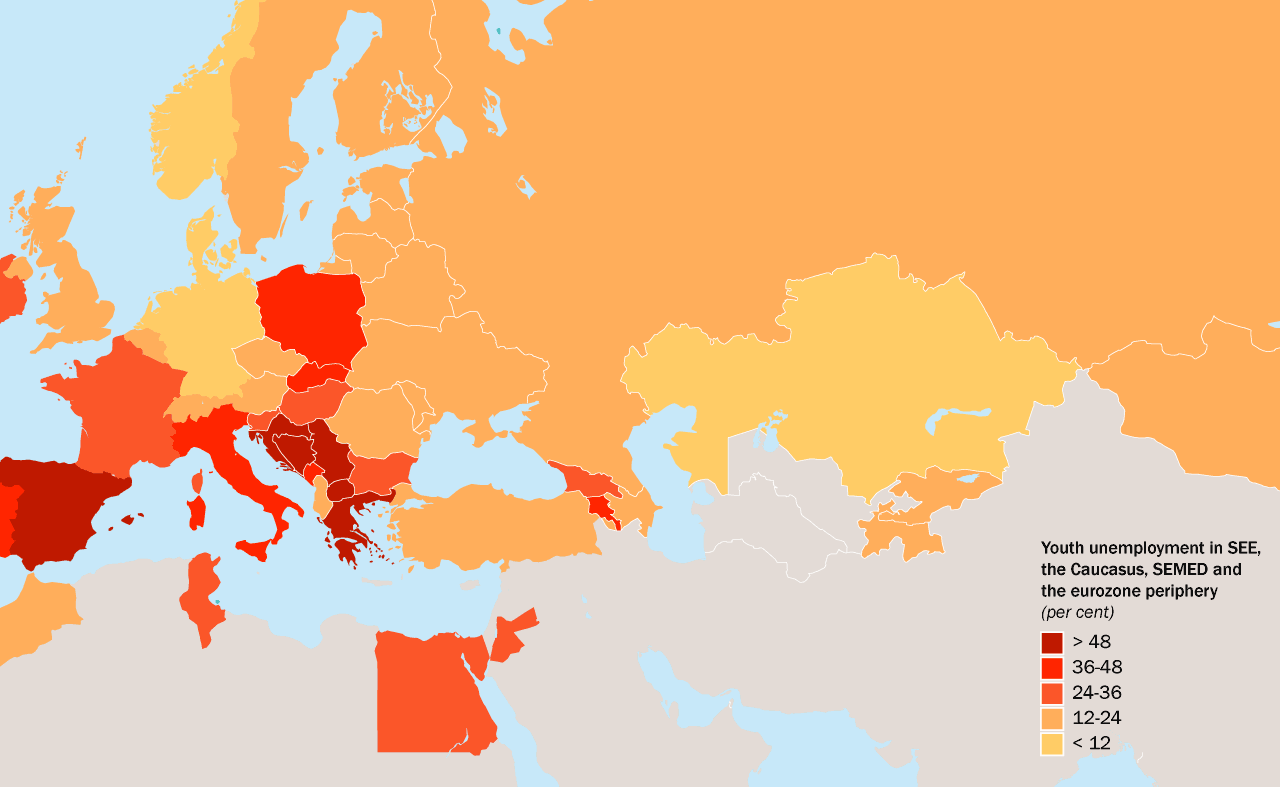Macroeconomic overview
Persistent high unemployment
- Details
- Macroeconomic overview
Continuing high rates of unemployment – in double digits in most CEB and SEE countries – are mostly a legacy of deep recessions in 2008-09. Output remains below pre-crisis levels in six CEB countries (as well as in Ukraine) and the persistence of high unemployment reflects this incomplete recovery (see Chart M.4). As a consequence, long-term unemployment has risen steadily in all CEB countries, Bulgaria and Romania – potentially resulting in declining labour-force participation and a loss of skills. Unemployment has been falling in the Baltic states – albeit from very high levels – but has increased in Croatia and Slovenia as their economies have re-entered recession, and has also risen in Egypt, Jordan and Morocco. Insufficient job creation is a long-term structural problem in SEMED countries that has become particularly pressing amid political unrest in recent years.
Most transition countries continue to see high levels of youth unemployment. In several western Balkan states youth unemployment rates are in the region of 50 per cent or higher, in line with the most extreme cases in the eurozone periphery (namely Greece and Spain; see Chart M.5). Youth unemployment is also a concern in some CEB and SEMED countries, as well as in Armenia and Georgia. In the SEMED region the problem is magnified by demographics, as young people account for a large and rising share of the population (see Box S.1).














